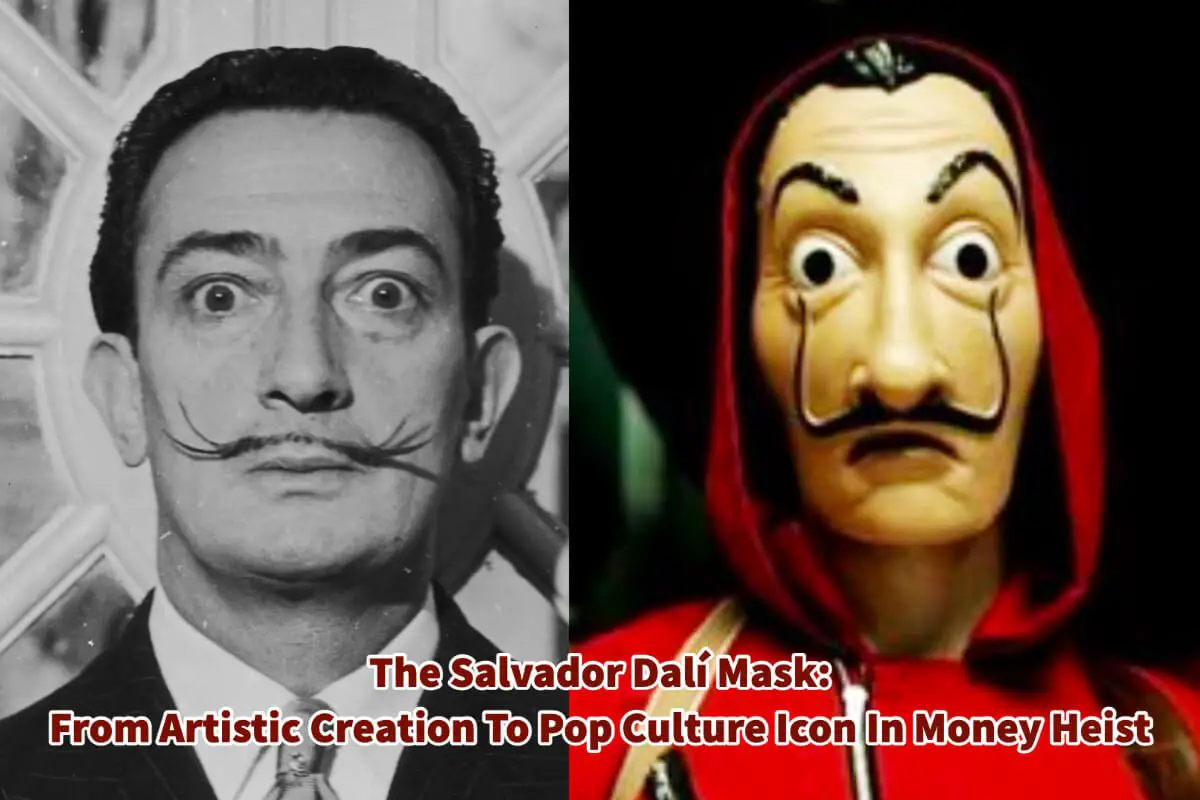If you have seen the movie Money Heist, one thing that stands out is the masks used. The iconic mask they are showing is a mask of Salvador Dali.
Salvador Dali is a famous Spanish artist whose facial image is used on a mask that has become a cultural icon. The mask was used in the famous Spanish series known as Money Heist; the mask now also symbolizes other things, such as being able to stand up for corruption and justice. All this has added to Salvador Dali’s fame, making him a cultural icon.
Table of Contents
- About The Artist Salvador Dali
- Truth About The Salvador Dali Mask
- Salvador Dali’s Mask In The Hit Movie Money Heist
- Salvador Dali And His Mask Are A Cultural Icon
- “Salvador Dalí: Master of Dreams and Delirium”
- Frequently Asked Questions
- Related Questions
About The Artist Salvador Dali
Salvador Dalí is one of the most well-known artists of the 20th century. He was born in Figueres, Spain, in 1904 and became a prominent figure in the surrealist art movement.

His work was often characterized by its dreamlike quality, with strange and surreal imagery that challenged conventional ways of thinking While he was alive, Dalí created many famous works of art and is considered an important Spanish artist.
Truth About The Salvador Dali Mask
The famous Salvador Dali mask, used in the money heist movie, was never made by Salvador Dali. The mask is only inspired by Salvador Dali’s face.
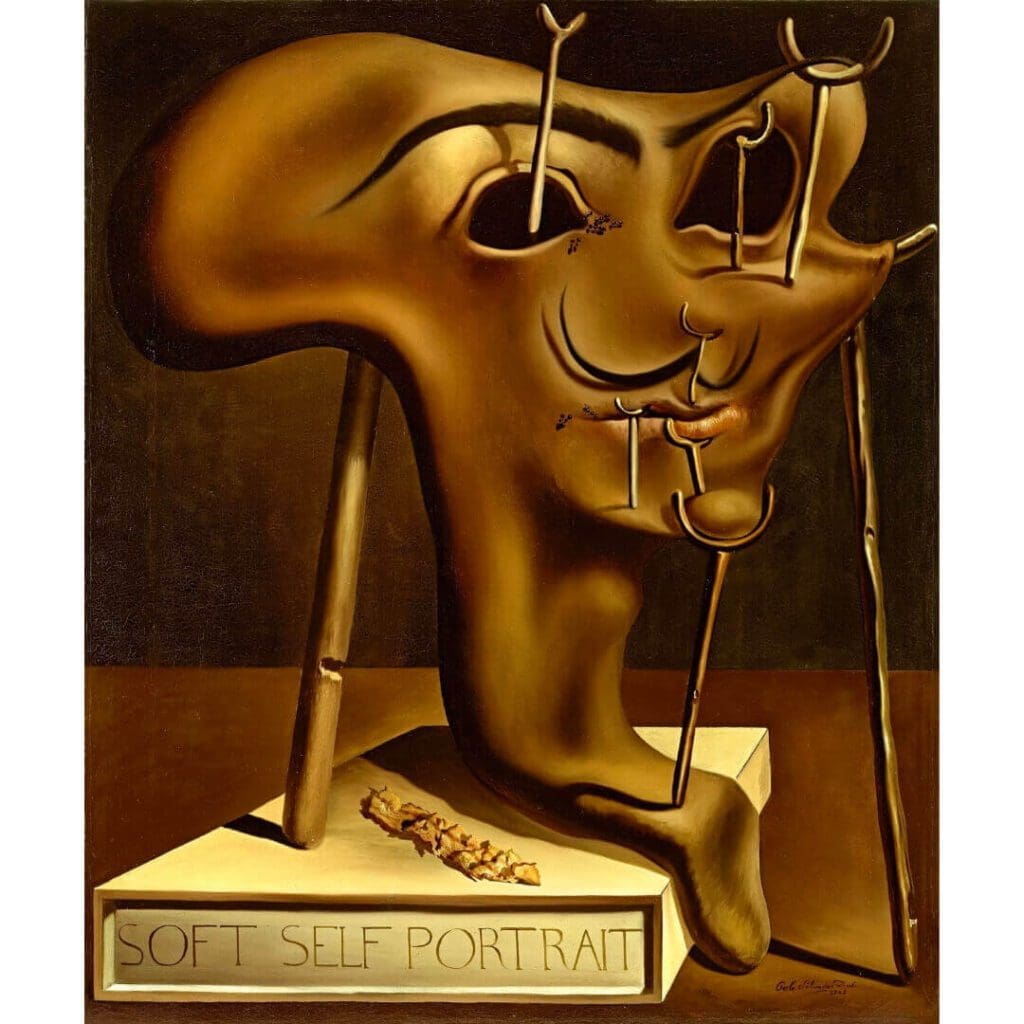
Soft Self-portrait with Grilled Bacon, By Salvador Dali 1941
Salvador Dali did produce a work of art that had a gold kind of mask on it known as Soft Self-portrait with Grilled Bacon.” The painting is filled with irony, as only Dali had.
The face or the mask-like figure is soft and is supported by crutches. And there, sitting next to it, is the fried bacon. The fried bacon symbolized his breakfasts at the New York Saint Regis Hotel.
This painting was more a self-portrait, as the name applies, and not a mask, but it also showed a kind of melting or meltdown.
Salvador Dali’s Mask In The Hit Movie Money Heist
Instead, the mask in the movie Money Heist is not one Dali produced but is a mask of his face. The mask has his bulging-out eyes and icon mustache – we believe Salvador Dali would approve of the irony of the mask.
The mask has made Dali a cultural icon because it was used in the hit Spanish series Money Heist. The show, also known as La Casa de Papel in Spanish, follows a group of robbers who attempt to pull off a heist at the Royal Mint of Spain.
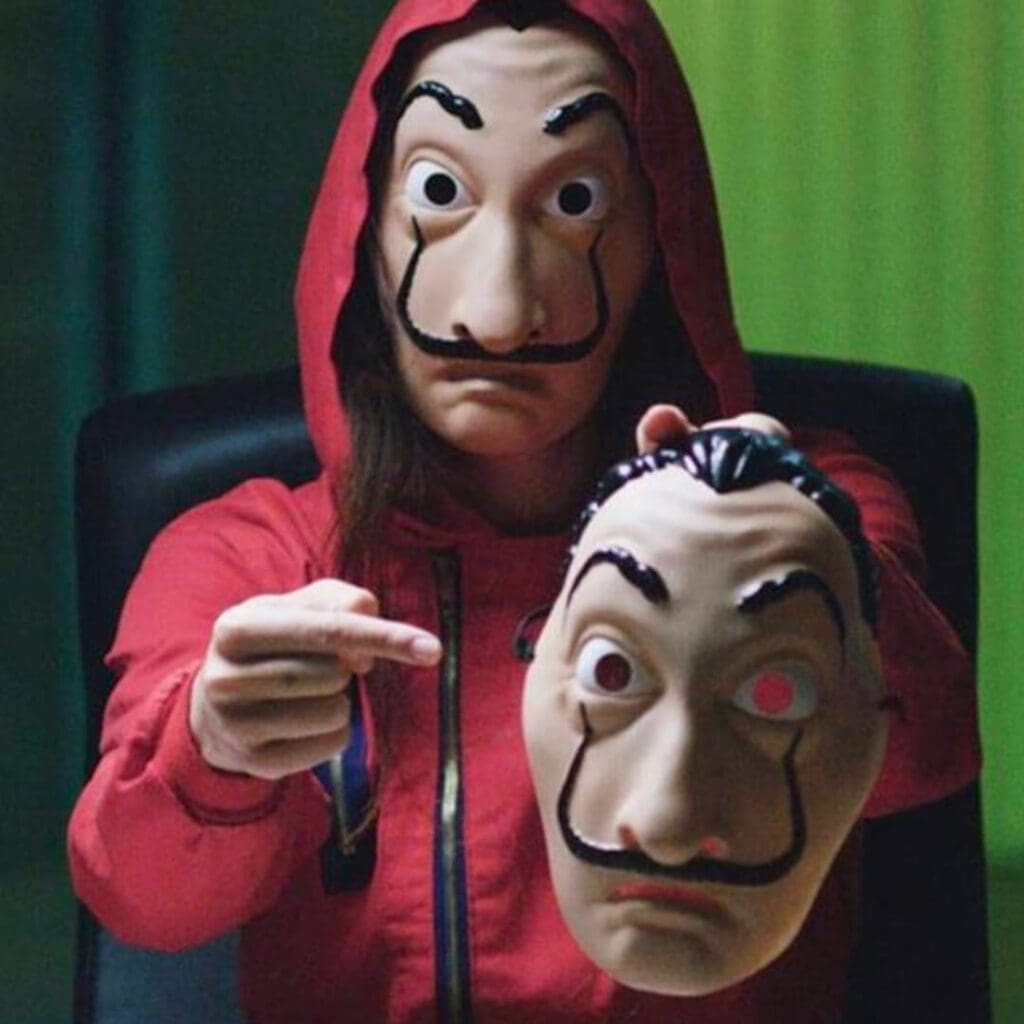
Alex Pina created the series, which has become a global phenomenon since its premiere in 2017.
In Money Heist, the mask is used by the robbers as a way to hide their identities during the heist. They wear masks inside the mint, making it difficult for the police to identify them.
The use of the masks is also a nod to Dalí’s legacy, as the show is set in Spain, and the mask is an iconic symbol of Spanish art and culture.
Money Heist, The Masks, Salvador Dali, And Spanish Culture
The Salvador Dalí mask has become a defining feature of Money Heist. It has been widely praised for its striking appearance and connection to Spanish art and culture and the face of Salvador Dali.
The mask has also become a popular Halloween costume, with show fans dressing up as the robbers and donning the iconic mask.
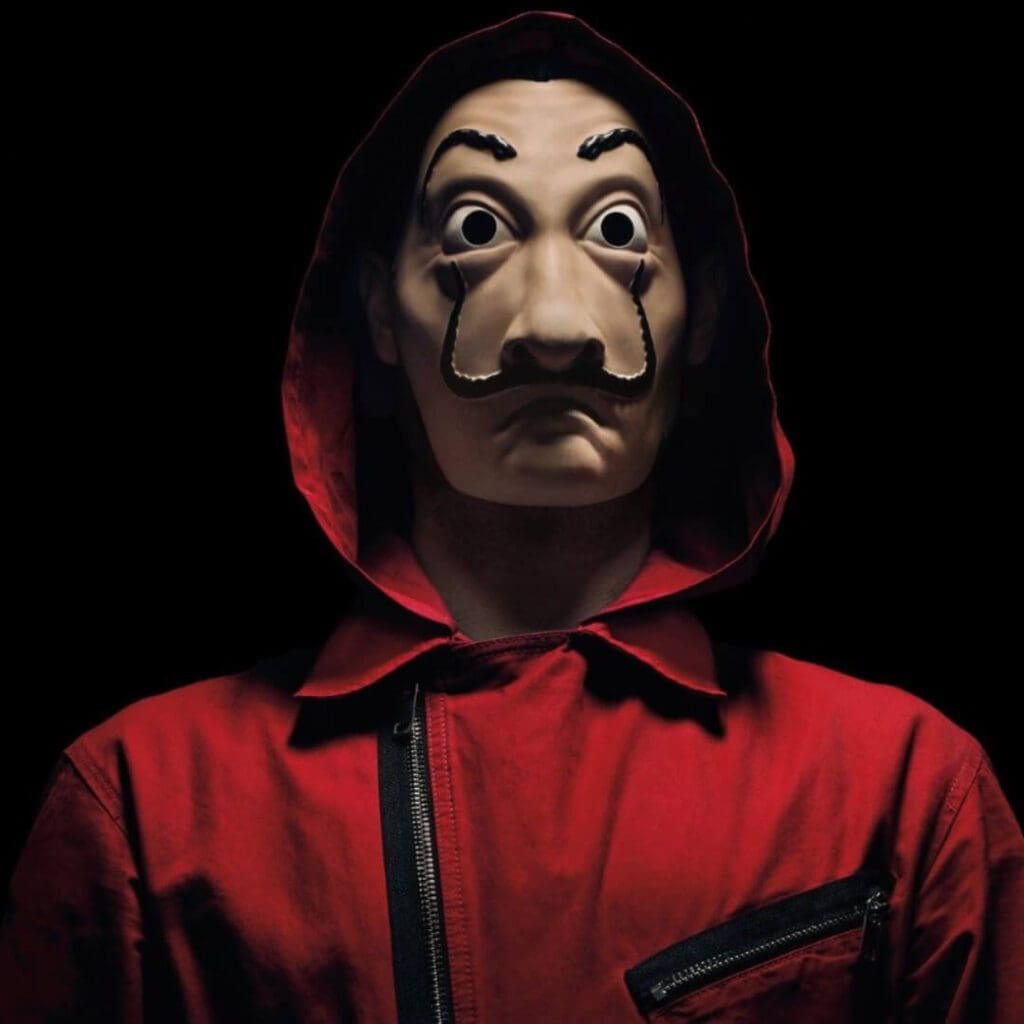
But the mask isn’t just a symbol of art and culture – it also has a deeper meaning within the show’s context. The heist in Money Heist is about more than just money – fighting against the corrupt system and standing up for what is right. The robbers wear masks to represent this fight and show they are united in their cause.
The Salvador Mask And Standing Up For Corruption
In many ways, the Salvador Dalí mask has become a symbol of resistance and rebellion in the show and real life. It represents the power of art and culture to challenge the status quo and inspire people to fight for what they believe in.
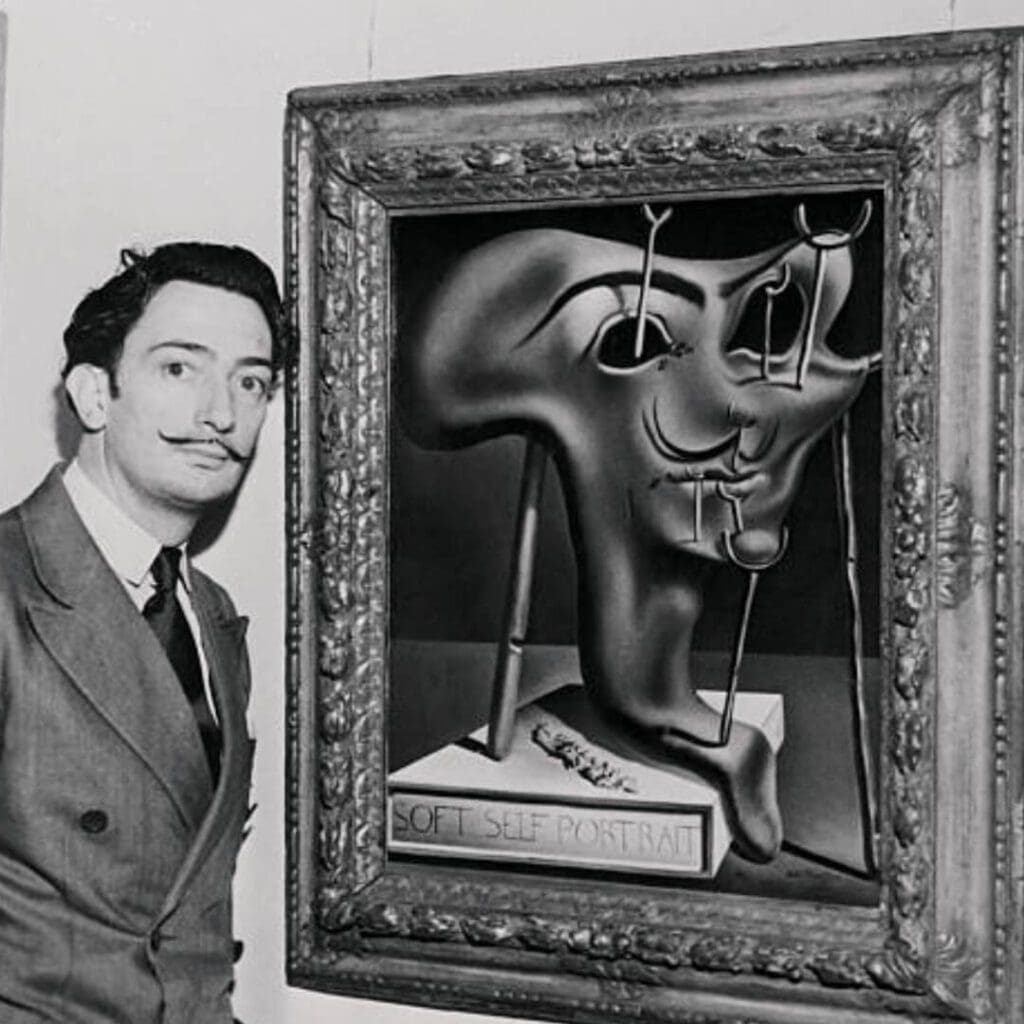
Through the mask, the Money Heist has cemented its place in popular culture and inspires new generations of artists and fans.
The mask is both a symbol of an important artist and a symbol of resistance; the mask represents the enduring legacy of Salvador Dalí and his impact on the world of art and culture.
Salvador Dali And His Mask Are A Cultural Icon
Salvador Dalí was not just an artist but a cultural icon who challenged conventions and pushed the boundaries of what was considered acceptable in art. His unique style and surrealist vision continue to captivate and inspire people today.
His work has had a lasting impact on art and culture, and his legacy lives on through his many famous works.
The mask in The Money Heist was chosen as it symbolizes Dalí’s artistic legacy, rebellion, and resistance. The show has been praised for portraying complex characters fighting for justice and against corrupt systems, and the mask only adds to its impact.
“Salvador Dalí: Master of Dreams and Delirium”
Salvador Dalí, with his iconic mustache and flamboyant personality, remains one of the most enigmatic and influential figures in the world of art. His contributions stretch beyond mere paintings; Dalí crafted a universe of wonder, challenging perceptions and pushing the boundaries of imagination.
Here are 11 reasons that delve into the brilliance of Salvador Dalí and highlight his stature in the pantheon of great artists:
- Surrealist Icon: Dalí is synonymous with Surrealism. His dreamlike visuals, filled with melting clocks and distorted figures, epitomize the movement’s essence.
- Technical Mastery: Beyond his imaginative prowess, Dalí was a master technician. His paintings often display meticulous attention to detail reminiscent of Renaissance artists.
- Innovative Symbolism: Dalí created a unique set of symbols—melting clocks, distorted figures, and crutches—that recur throughout his work, each bearing deep personal and universal meanings.
- Versatility: While best known for his paintings, Dalí’s artistic endeavors spanned sculpture, film, photography, and writing, showcasing his multifaceted talent.
- Collaborative Spirit: Dalí frequently collaborated with other greats, including filmmaker Luis Buñuel for the groundbreaking film “Un Chien Andalou” and designer Elsa Schiaparelli for avant-garde fashion.
- Public Persona: Dalí’s eccentric behavior, public stunts, and memorable interviews made him an early master of personal branding, intertwining his life and art in the public’s eye.
- Enduring Impact: Dalí’s influence persists in contemporary art, design, cinema, and pop culture. Countless modern creators have referenced and revered his distinct style and motifs.
- Visionary Approach: Dalí was among the first artists to incorporate psychological and scientific themes, inspired by Freudian psychoanalysis and the burgeoning field of quantum physics.
- Museums and Exhibitions: The artist’s legacy is immortalized in the Salvador Dalí Museum in St. Petersburg, Florida, and the Dalí Theatre Museum in Figueres, Spain, attracting millions of admirers.
- Cultural Commentary: Beneath the surface, many of Dalí’s works offer critiques on society, religion, and morality, showcasing the depth and breadth of his reflections.
- Timeless Appeal: Despite the progression of time and changing artistic trends, Dalí’s works remain relevant, intriguing, and inspirational, proving his enduring genius.
Salvador Dalí, a maestro of the bizarre and the beautiful, forged an artistic path that many admire but few can emulate. His creations are not just works of art; they are windows into a man’s psyche for whom boundaries, whether in art or life, were merely challenges to be transcended.
Anita Louise Art is dedicated to art education, great artists, and inspiring others to find and create their art. We love art that uplifts and inspires. #ArtToMakeYouSmile! #ArtToMakeYouHappy!
If you want to see any of my art, you can find out more by clicking here. If you are interested in what inspires me and my paintings, you can discover more by clicking here.
We have a free newsletter and would love you to be part of our community; you can subscribe to the newsletter by clicking here. If you have any questions, I would be happy to talk to you anytime. You can reach me, Anita, by clicking here.
Subscribe to our Anita Louise Art YouTube Channel with great videos and information by clicking here.
Join us for our podcast “5 Minutes With Art.” Spend 5 minutes a week with us to discover and learn about great art and artists. You can find out more about our podcast by clicking here.
Frequently Asked Questions
Who is Salvador Dali?
Salvador Dali was a renowned Spanish surrealist artist known for his distinctive and eccentric style. He is considered one of the most influential artists of the 20th century.
What are some of Salvador Dali’s famous artworks?
Some of Salvador Dali’s famous artworks include “The Persistence of Memory,” “The Elephants,” “The Melting Watch,” “Swans Reflecting Elephants,” and “The Sacrament of the Last Supper.”
When was Salvador Dali born and when did he die?
Salvador Dali was born on May 11, 1904, in Figueres, Catalonia, Spain, and he passed away on January 23, 1989, in the same town.
What is surrealism, and how is Dali associated with it?
Surrealism is an art movement that emerged in the 1920s, characterized by juxtaposing dreamlike and irrational elements. Salvador Dali is closely associated with surrealism and is considered one of its key figures.
What is the significance of Salvador Dali’s mask in Money Heist?
The mask featuring Salvador Dali’s face in Money Heist serves as a symbolic representation of rebellion against corruption and standing up for justice. It has become an iconic element of the show, reinforcing the theme of resistance.
Did Salvador Dali design the masks specifically for Money Heist?
No, Salvador Dali did not design the masks specifically for Money Heist. The creators of the show chose to use his image as a recognizable symbol to convey the idea of resistance and challenge to authority.
How did Salvador Dali become a cultural icon through Money Heist?
Salvador Dali’s mask in Money Heist became a cultural icon by being associated with the show’s themes of rebellion, resistance, and justice. The mask has gained recognition beyond the series, representing a symbol of defiance against corruption.
What other cultural references are associated with Salvador Dali?
Salvador Dali’s influence extends beyond Money Heist. His surreal artworks, distinctive mustache, and flamboyant personality have made him an enduring cultural reference in various forms of art, fashion, and popular culture.
Related Questions
All About En Plein Air Painting, What You Need to Know
En Plein air means “in the open air.” It refers to a style of painting outside in natural light. This term was made famous by the French Impressionist art movement. Many of the French Impressionists painted most of their paintings outdoors. Many equipment and other challenges were associated with painting everything outdoors.
By clicking here, you can discover more by reading All About En Plein Air Painting, What You Need to Know.
John Albert Bauer, Sweden’s Gnomes and Troll Artist (1882-1918)
John Albert Bauer is the Swedish artist and illustrator most widely known for his gnomes and trolls. Because of his detail in studying the Sami people in Northern Sweden, he used many of these same artifacts in his illustrations. He is most well known for his illustrations in the anthology Among Gnomes and Trolls.
By clicking here, you can learn more by reading John Albert Bauer, Sweden’s Gnomes and Troll Artist (1882-1918).
What Was The Impact Of Vincent Van Gogh On The Art World?
Van Gogh used color, form, and emotions in his art. He had a bright palette that was individualized for his time. Even though he did not see a lot of success during his life after he died, the impact of his art can be seen in both the Expressionism and Fauvism movements that were taking place in Europe.
By clicking here, you can learn more by reading What Was The Impact Of Vincent Van Gogh On The Art World?

